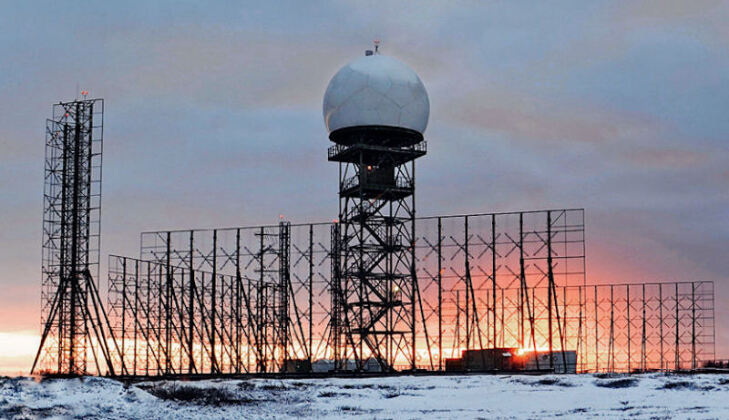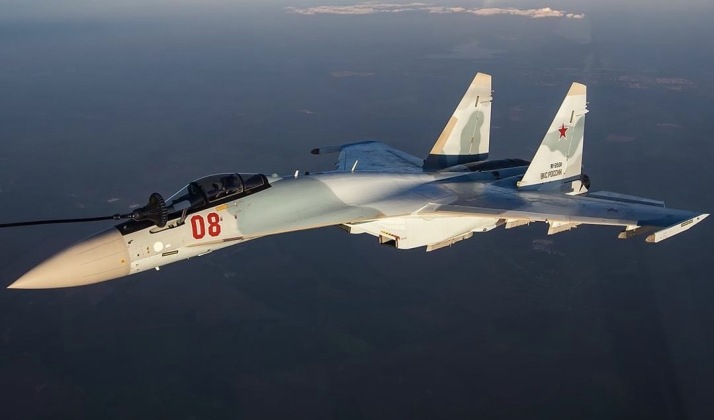News
Iran’s New Air Defence System Identifies ‘Fingerprints’ of Individual F-35 Stealth Fighters – Reports
In the latest of multiple breakthroughs in the development of indigenous air defence systems Iran has reportedly developed a system capable of detecting the“fingerprints” of individual F-35 stealth fighters and other advanced assets fielded by adversaries. Issues with the F-35’s heavier counterpart the F-22 leading to its early retirement, and delays to development of the B-21 Raider bomber, leave the F-35 as the only Western aircraft fielded in meaningful numbers capable of potentially penetrating Iran’s integrated air defence network. This network has proven capable of neutralising high end American assets including stealth drones in the past. With the U.S. and its allies between them set to field over 3000 F-35s, the ability to counter the aircraft is highly prized both by Iran and by several of its security partners such as North Korea, Russia and China. Regarding the capabilities of the new system, the Head of Iran Electronics Industries (IEI) Brigadier General Amir Rastegari stated to this effect in an interview with local media:
“We have the fingerprints of the enemy’s electronic equipment. Just as fingerprints are unique to humans, this is also the case in regard to electromagnetic systems, and we have achieved the technology [to detect them] for several years… For example, if the radar of an F-35 fighter begins operations and surveillance, it emits radar waves which are different from those of another’s F-35’s radar waves. Today, we are capable of recognising them, that is, we can receive and analyse the telecommunication, radio and magnetic signals and find out the warplane they belong to. If the same fighter jet starts operating later, we will immediately find out about it.”

Iran’s progress in modernising its air defences, and in studying and reverse engineering American stealth technologies, have repeatedly caught Western analysts and officials by surprise. The country’s air defence network has also benefitted from integration of Russian technologies, including the Rezonans-NE radar which has proven successful both in detecting and in tracking F-35s operating in the region. Deputy CEO of the Rezonans research centre Alexander Stuchilin stated to this effect on August 24, 2020: “At the beginning of 2020 this radar identified U.S. F-35 planes and tracked them… The radar’s personnel were transmitting information, including the routes of F-35 flights, in clear, thus confirming that it was reliably tracking the planes. For this reason, the opponent did not commit any irreparable actions that might have caused a big war.”
Iran has long been speculated to be considering acquiring S-400 air defence systems designed specifically to counter American stealth aircraft using multiple dispersed radars operating in different wavebands, although officials have recently indicated that such acquisitions are no longer seen as under consideration. Iran has nevertheless proceeded to order Su-35 fighters – ‘4++ generation’ heavyweight combat jets which use triple radars, including two L-band AESA radars, to maximise situational awareness against stealth targets. These are expected to be networked with ground based air defences, with their elevated sensors providing a further boost to situational awareness.

Elaborating on operations by enemy fighters near Iranian airspace, and the responses of the country’s air defences, General Rastegari elaborated:
“Some time ago, an enemy aircraft approached to within our airspace boundaries and began emitting radar waves to collect information. We jammed this aircraft, but the enemy pilot thought his system was malfunctioning and called back to base, saying ‘my systems have encountered a problem, I will return.’ We have records of this exchange. The next day, two more enemy planes approached…This time we disrupted both of them… As soon as we began to disrupt them, the two planes realised that our ground systems were jamming them, so they radioed to base that a ‘jammer is operating here and we can no longer operate.’ This capability exists in our Armed Forces today. We can disrupt [the enemy] if we see a threat at distances of several hundred kilometres away.”
These reported Iranian operations mirror ongoing jamming efforts by Russian S-300s and other systems operating in Ukraine, which frequently come into contact with F-35s flying over Eastern Europe. Iran is itself an operator of some of the most advanced variants of the S-300 system, which were acquired specifically to provide an asymmetric defence against possible Western air attacks on cities, military bases and nuclear facilities. Although the F-35 is considered far from ready for high intensity combat, it remains a potentially potent threat particularly to countries heavily dependant on ground based air defences as it was designed primarily for strike missions, including nuclear delivery, rather than air to air combat.












